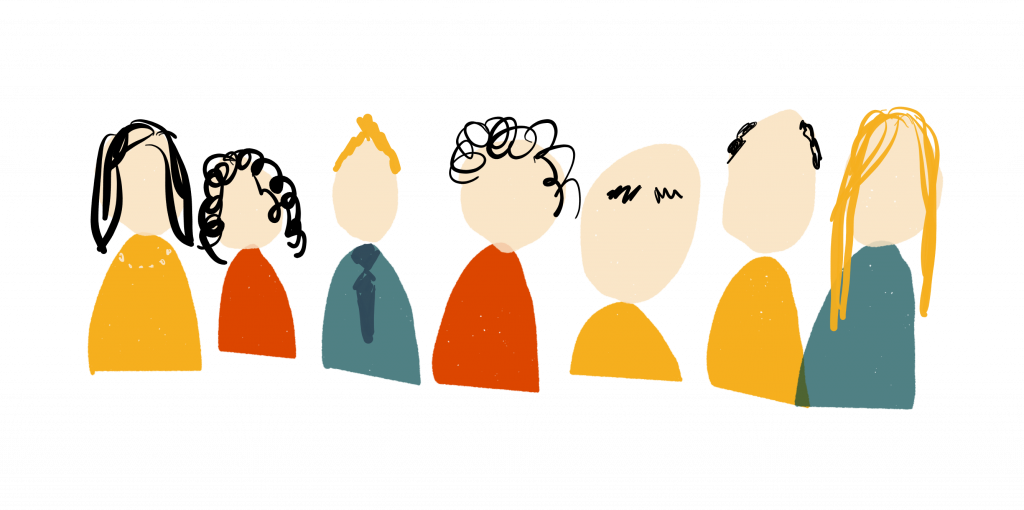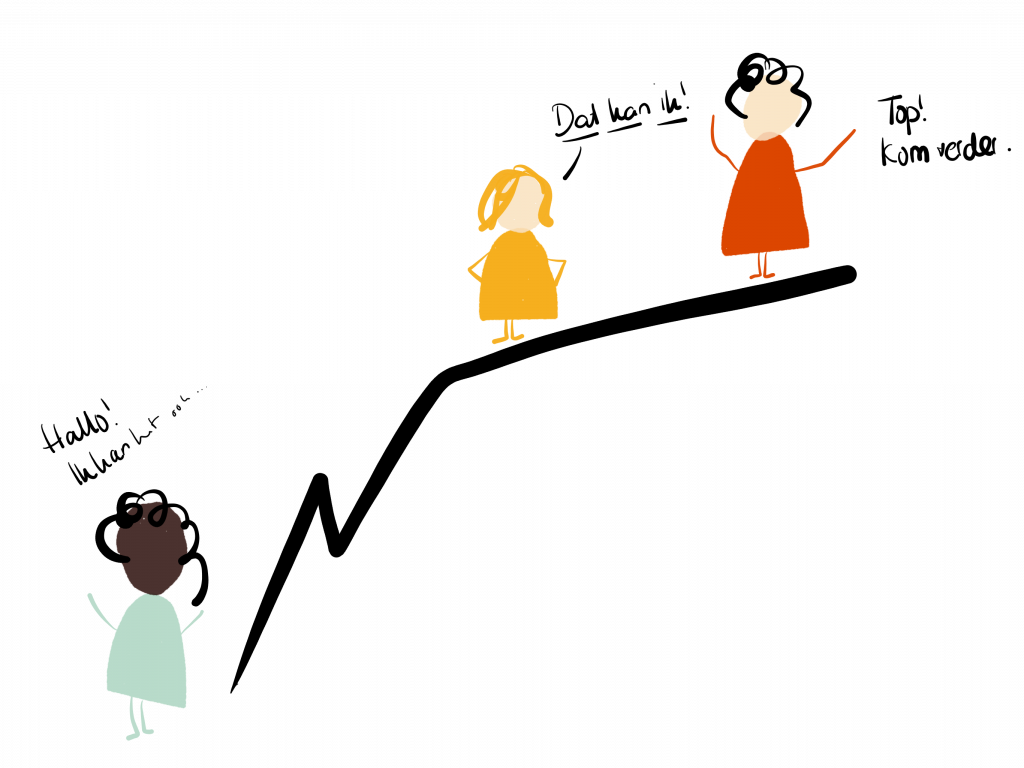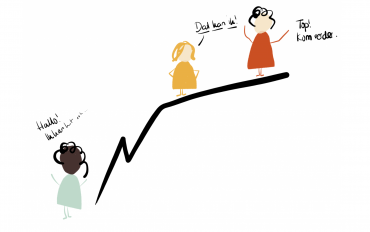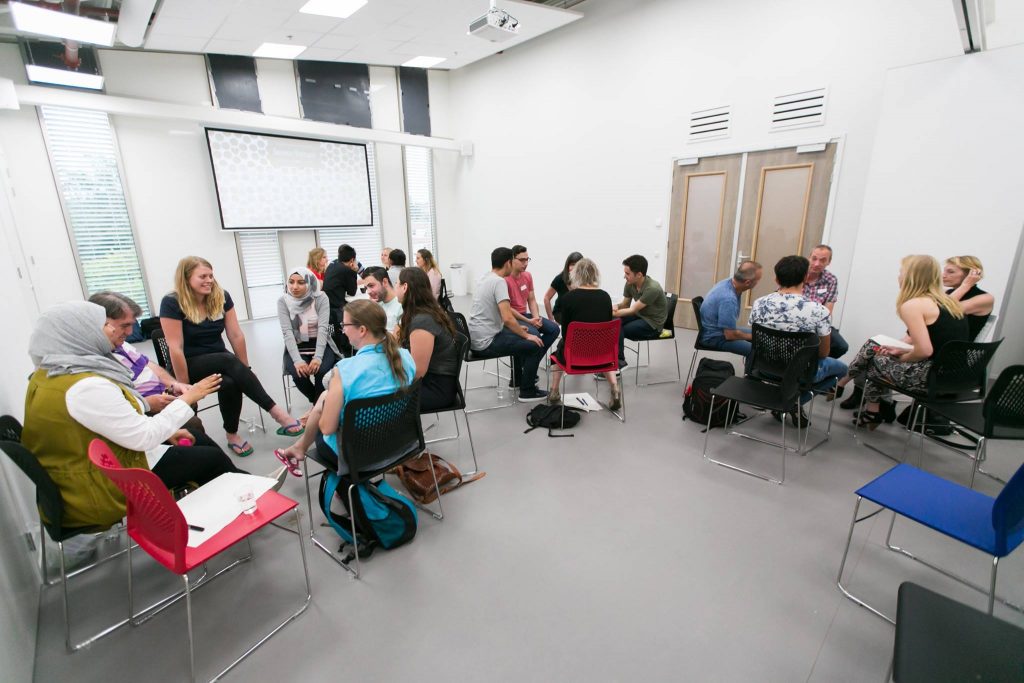In the end of November is the User Central conference and I am hosting it this year. This week I spoke to one of the speakers and she told me that she did not want to be at an all-white conference. She did have some names of good speakers of color that we could invite, possibly instead of her if there was no more room in the program.
In this blog my thoughts about, from where I can see, there are few designers of color working in the Dutch government and why that is a problem.
A very white frame
A month before my interview with the speaker in question, I was looking for great speakers to shortlist. I obviously wanted a lot of good women who really have something to say, after all, there are quite a lot of them. Of course some men, but no pancakes please, they too should really have something to report. I looked proudly at my list which secretly had more women on it than men, gna gna. You get it, I’m well sick of these all-male conferences.
Only, my list was very white. That bugged me. I searched on, but wasn’t really sure how. If you search for designers or anything with “design thinking” in combination with “government” on LinkedIn you will scroll through lists of white people. In my own network (and it is not small) there are also mostly a lot of white people. Asking out loud on Twitter for tips, I felt quite a bit of trepidation there. How do I formulate that question?

After the video call, I lingered on the call with co-organizer Robert. We both wanted things to be different. Of course we were going to ask someone from her list, but the following days it stayed in my head. Why do I know so few designers of color in the Netherlands? I’m sure there are, there must be.
“How do you start?” I asked Robert. “Do I just pop on Twitter: ‘hello, designers of color, where are you?” “Yeah, maybe that’s the beginning.”
Design in government is too white and that’s a problem
The core of design thinking is that you start with people. The human perspective is leading, and then you align organizational and technical interests. The government is there for everyone, or at least it should be. That also means for people who are not white. In my opinion, white people are by far the majority in government. They look at me from their LinkedIn profiles and from the pictures that accompany government vacancies and are highlighted on Twitter. They are on the stages of government conferences, and even my portrait series The Compassionate Civil Servant is a gallery of white people.

In my research into what role understanding has in digital government, I discovered that technology is not neutral. The white creators of digital government unknowingly put pieces of themselves into what they create. Pieces about how they see the world, what is good or bad behavior and how laws are interpreted. It is people work that is currently done mostly by white people. Technology reflects our cultural and political values. I wrote the essay “Empathy in Government” about this.
If white is the norm, and you are the norm, it’s hard to notice how people who are not that norm perceive your digital services. There are so many advantages to having a more diverse team. To have more perspectives and not blindly follow the norm that is not normal for everyone.
In 2017, I conducted research on integrating in the Netherlands. I am from Suriname and moved to the Netherlands when I was 14. My own homesickness came back during the study. The mix of emotions I felt when I had to “Dutchify” I recognized in the refugees with whom I did research. My research became richer. Our conversations went into more depth about cultural differences, what it’s actually like to move from country to country and how that affects the integration process. My background actually helped to do this research.
My colleague Ruth who has a Caribbean background herself did research last year on debt burdens in the Caribbean Netherlands. Precisely because of her background, she had a different starting point, spoke the same language, knew the right cultural differences and the research became better than if I, for example, had done it.
When we tested the Arabic version of the app for CoronaMelder, I felt awkward. I didn’t even know what to look for. The language, of course, but because Arabic is right-to-left it also changes the app’s user interface. On Twitter, I learned that just the readability of Arabic fonts alone could get you an evening of tweeting. You will only find this out if you work intensively with people of Arab background, even better if they are on your team.
Are we making enough of an effort?
When I asked colleagues if I could photograph them as compassionate civil servants, they were mostly white men. After the fifth photo, I couldn’t ignore it. “I should ask more women,” I thought. After the seventh photo, I looked at the prints hanging in my studio and thought “everyone is white, I don’t want that.” It sometimes gave me a stomach ache. Where I sometimes found it hard to find a woman in a department full of ict workers, I found it even harder to find someone of color. And, I ask that person then just because they are a woman, or because they are of color, or is it about the content job? I often struggled with these questions.
We can’t find them because they don’t seem to be there. And since they don’t seem to be there, we don’t include them.
‘But if you’re good, you’ll surface naturally, right?’ That’s not true.
When I started as a government researcher 7 years ago, I didn’t come out on top because I was so good. No, I saw an opportunity, was bold and said I could do it. I had all the traffic lights with me. I was lucky. I knew the person who made the selection and I bluffed myself in. I was given the opportunity.
Then I threw myself into the subject matter like mad, read books, asked questions out loud, and started this blog to share what I learned. My colleague Ruth once told me that because she is black, she always feels like she has to work harder, prove more and can’t bluff without immediately falling through.
A lot of research has been done on this. If you are white, it is easier to “float to the top” than if you are black. Anousha Nzume’s book “Hello White People” is a great starting point if you want to learn more about this.

I would like myself to change this.
That’s why I think it would be fun to get to know designers of color, especially if you work in government. Send me a message on Twitter or an email to maike @ klipklaar. nl. Who are you, and how are you thinking about these things? And how can we change it together?


